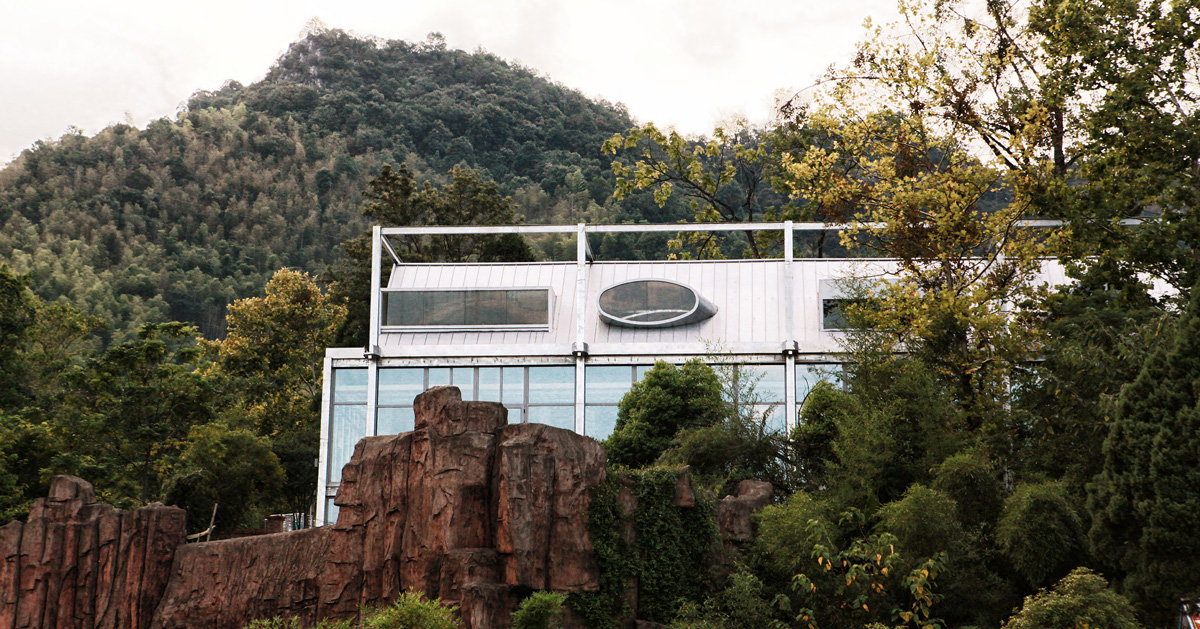
Monolith architects transforms abandoned factory into 'ten times hotel' in rural china
- Select a language for the TTS:
- UK English Female
- UK English Male
- US English Female
- US English Male
- Australian Female
- Australian Male
- Language selected: (auto detect) - EN
Play all audios:

MONOLITH ARCHITECTS HAS TRANSFORMED AN ABANDONED FACTORY BUILDING IN SHANGYOU COUNTY, GANZHOU CITY, CHINA, INTO ‘TEN TIMES HOTEL’. immersed in the surrounding nature, the HOTEL‘s design
retains the basic shape and volume of the original construction, while an external steel frame provides the basic structure of the overall construction. a new glass façade reshapes the
exterior image of the building, turning the semi-outdoor corridor space into a part of the interior, while allowing more natural light to enter the hotel’s guest rooms. all images ©️ lei mao
originally the dormitory building of shangyou river hydropower station, ‘ten times hotel’ is close to yangming lake, a scenic area surrounded by a rich natural landscape. MONOLITH
ARCHITECTS HAS TRANSFORMED THE EXISTING BUILDING WITH AN EXTERNAL STEEL FRAME, WHICH SETS UP A NEW FAÇADE SYSTEM AND PROVIDES STRUCTURAL SUPPORT FOR THE NEW ROOF ATTIC AND LOGISTICS TRAFFIC
SPACE. the hotel’s design employs simple materials that are widely used in chinese rural architecture, including steel, brick, concrete and plywood. A NEW GLASS FAÇADE RESHAPES THE OVERALL
IMAGE OF THE BUILDING, AND ALSO TURNS THE SEMI-OUTDOOR CORRIDOR SPACE INTO A PART OF THE INDOORS, ENRICHING THE INTERNAL AND EXTERNAL SPACE RELATIONSHIP. the exterior wall of the 12 original
small rooms (15 sqm each room), which was arranged in a straight line, has been partially opened and these rooms transformed into bright, comfortable guest rooms, immersed in the
surrounding nature. the building has three relatively independent entrances and vertical traffic lines: the largest central entrance hall is connected to the four guest rooms upstairs; and
two three-bedroom and one-hall groups with independent vertical traffic lines are sitting in each side. GUESTS IN ‘TEN TIMES HOTEL’ ARE CLOSELY CONNECTED TO NATURE, WITH THE ORIGINAL SITE’S
THREE BIG TREES PRESERVED AND TRANSFORMED INTO PART OF THE BUILDING IN TERMS OF FAÇADE AND PLAN STRUCTURE. in such a quiet and natural environment in the countryside, the hotel provides a
localized, leisurely and peaceful way of living. more importantly, it adapts to the project’s financial situation in the real world and integrates the building into the local environment
with a ‘brutalist’ aesthetic, free from complex design languages, to meet site’s current functional needs.
